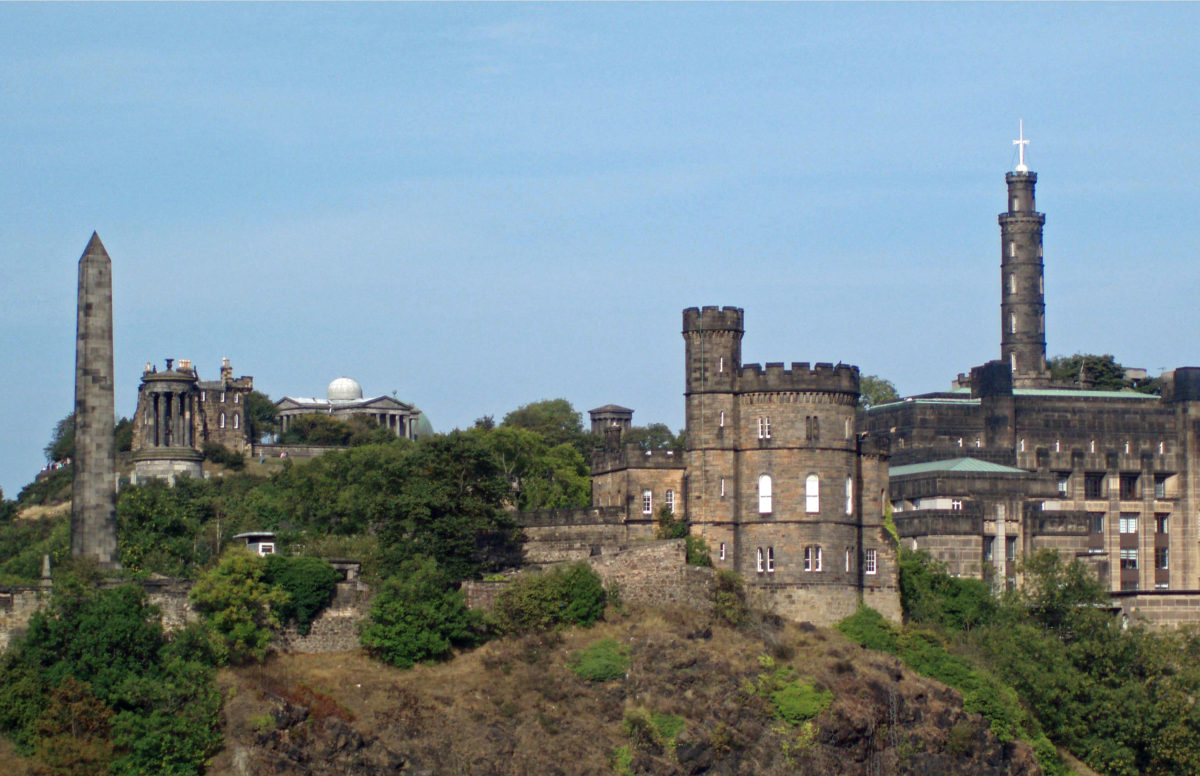Edinburgh
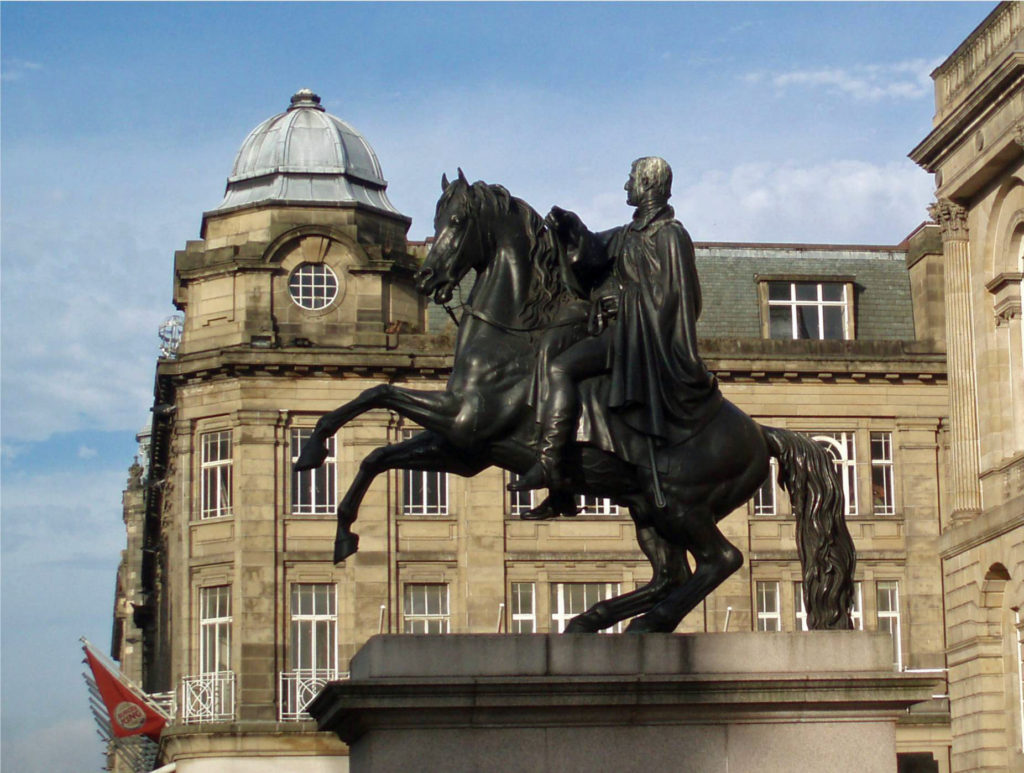
The City
When my wife and I were planning our first trip to Europe, Scotland was the destination we settled on, and we were not disappointed. Beautiful wild lands, castles everywhere, friendly people, 1500 years (or more) of history – that trip had everything. And Edinburgh was where we spent the most time. Edinburgh is the capital of Scotland and the historic heart of the country. It’s a beautiful and fascinating city, and no visit to Scotland is complete without spending at least a day or two in Edinburgh.
 That trip was more than 15 years ago and some things may have changed greatly since then, so I won’t go into much detail as to what to do, where to stay, where to eat, what things cost, and so forth. But there’s much to Edinburgh that is timeless, and undoubtedly has not changed in the years since our visit.
That trip was more than 15 years ago and some things may have changed greatly since then, so I won’t go into much detail as to what to do, where to stay, where to eat, what things cost, and so forth. But there’s much to Edinburgh that is timeless, and undoubtedly has not changed in the years since our visit.
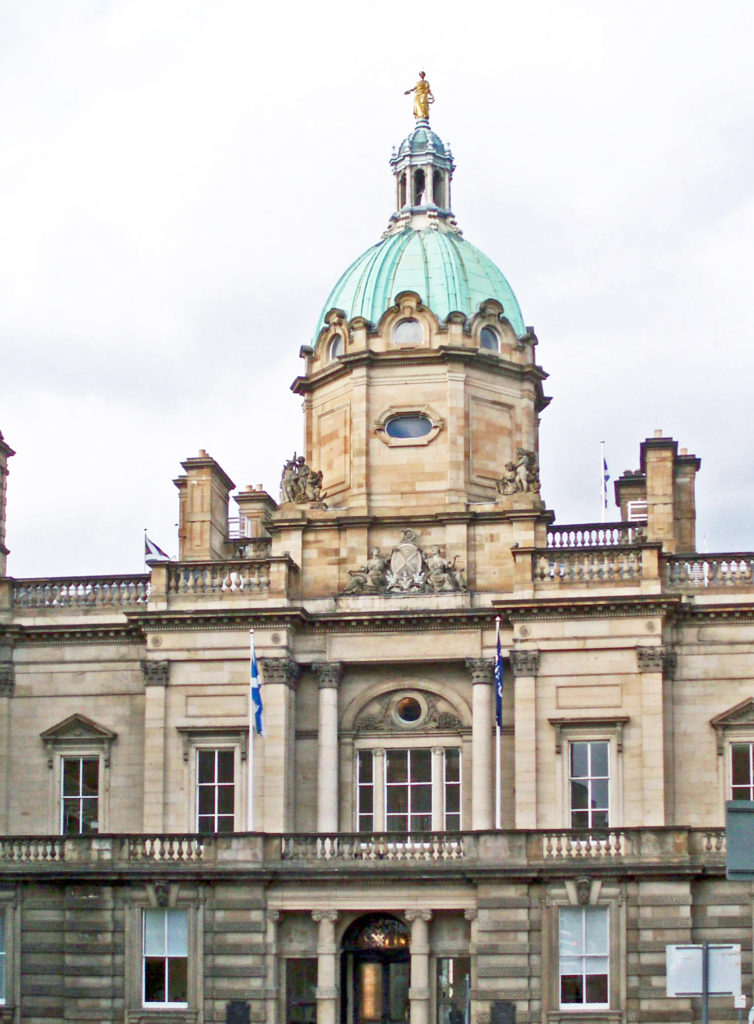 Central Edinburgh is divided into the Old Town and the New Town. The Old Town includes Edinburgh Castle, the Palace of Holyroodhouse, the Royal Mile connecting the two, and the area to the south. The New Town stretches from Princes Street Gardens, directly below the Castle, to Queen Street Gardens and the adjacent area to the north. The Old Town is the historic center of Edinburgh, and also the site of the present-day Parliament. As far as the New Town goes, new is a relative term since construction of the New Town began in the 1760s.
Central Edinburgh is divided into the Old Town and the New Town. The Old Town includes Edinburgh Castle, the Palace of Holyroodhouse, the Royal Mile connecting the two, and the area to the south. The New Town stretches from Princes Street Gardens, directly below the Castle, to Queen Street Gardens and the adjacent area to the north. The Old Town is the historic center of Edinburgh, and also the site of the present-day Parliament. As far as the New Town goes, new is a relative term since construction of the New Town began in the 1760s.
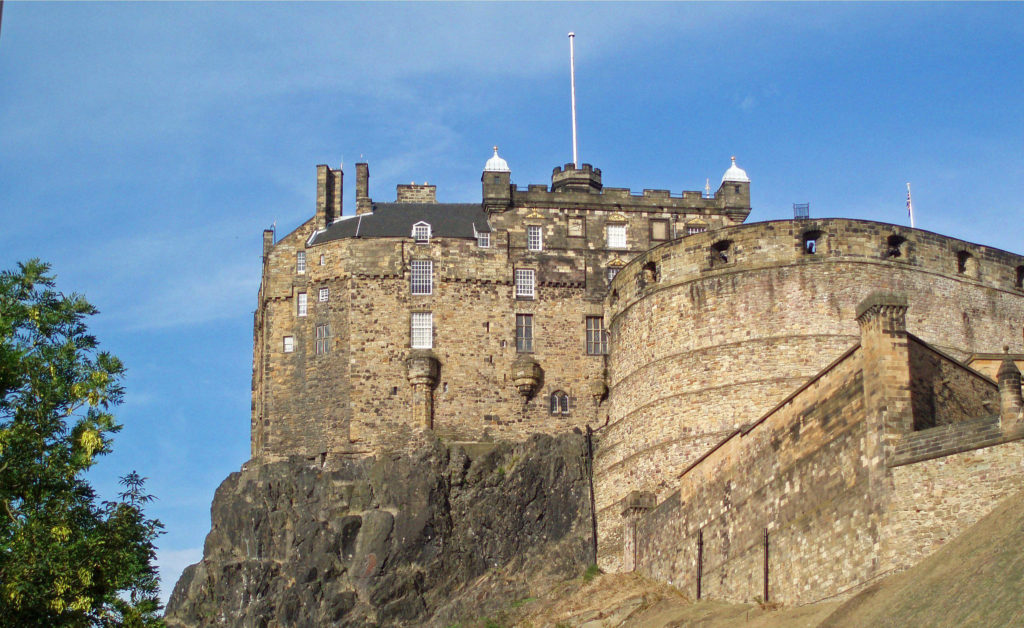 Both the Old Town and the New Town have their charms, and both deserve at least some of your attention. We spent most of our four days in Edinburgh exploring the Old Town, so I’ll focus on that part of the city.
Both the Old Town and the New Town have their charms, and both deserve at least some of your attention. We spent most of our four days in Edinburgh exploring the Old Town, so I’ll focus on that part of the city.

Edinburgh Castle
Built atop a volcanic outcropping called, appropriately enough, Castle Rock, Edinburgh Castle dominates the skyline of the city. The first castle on Castle Rock is thought to have been built in the 12th century, but none of that structure remains. The oldest remaining structure in the Castle is St. Margaret’s Chapel, dating to the mid 13th century. Most of the other remaining structure dates to the 16th century or later.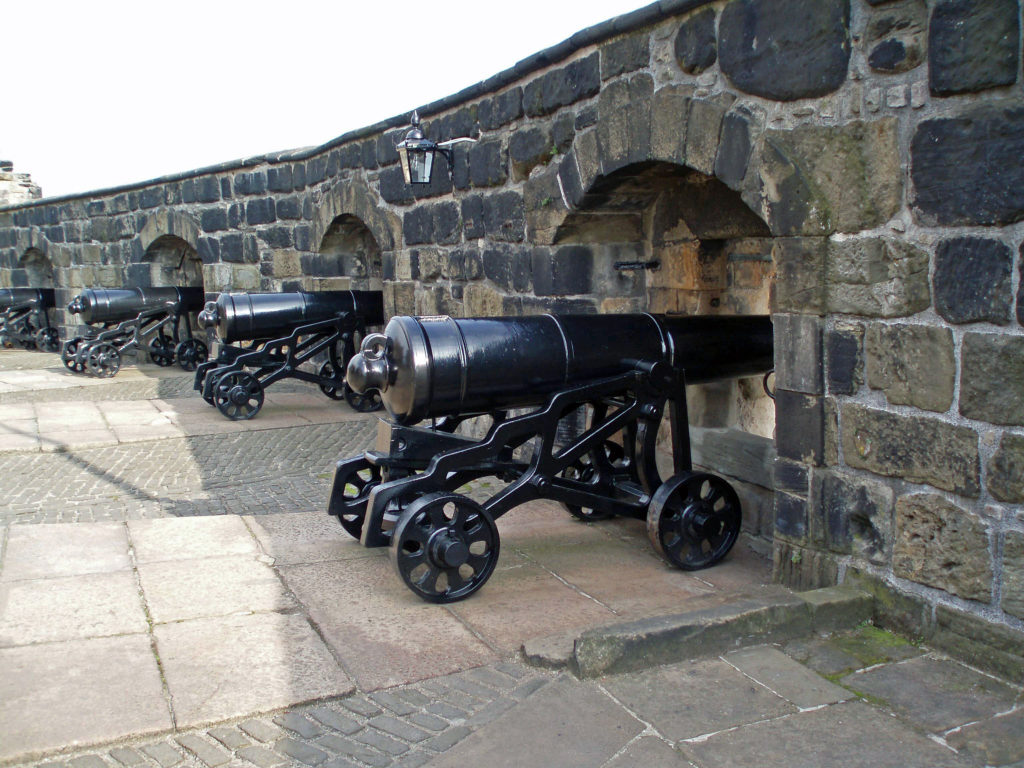
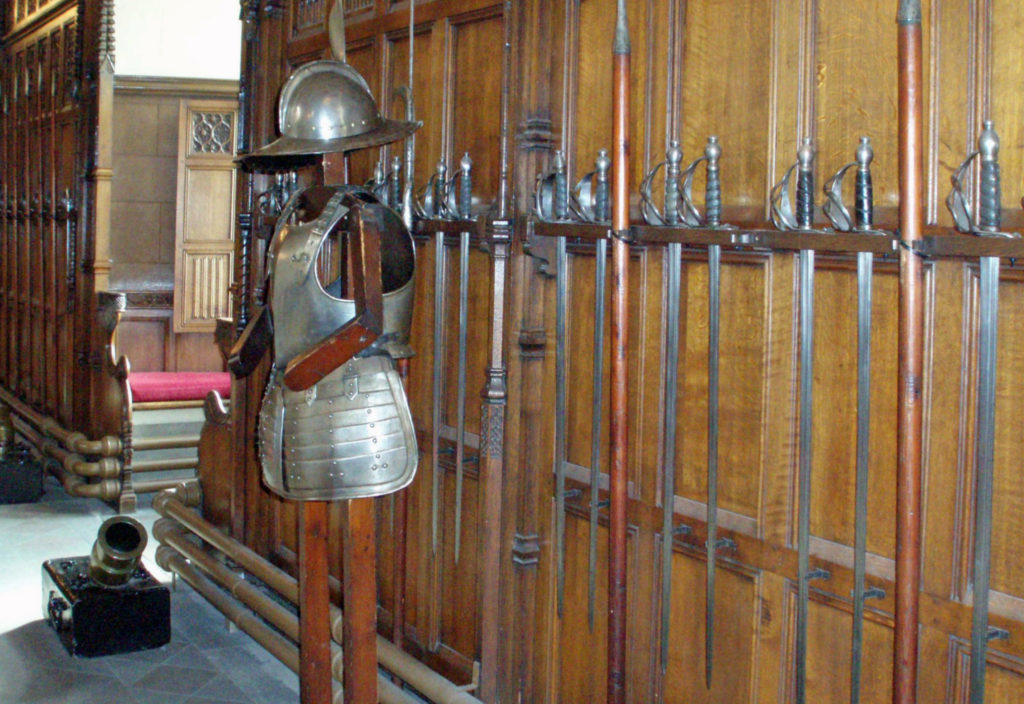
At the Castle, history and legend abound. You can visit the Great Hall, where the Scottish Parliament once convened, and Queen Mary’s Bedroom, where Mary Queen of Scots gave birth to James VI. You can see the Scottish Crown Jewels in the Crown Chamber, tour the French Prisons, and see the huge five-ton cannon known as Mons Meg. Plan to spend several hours at a minimum exploring the Castle.
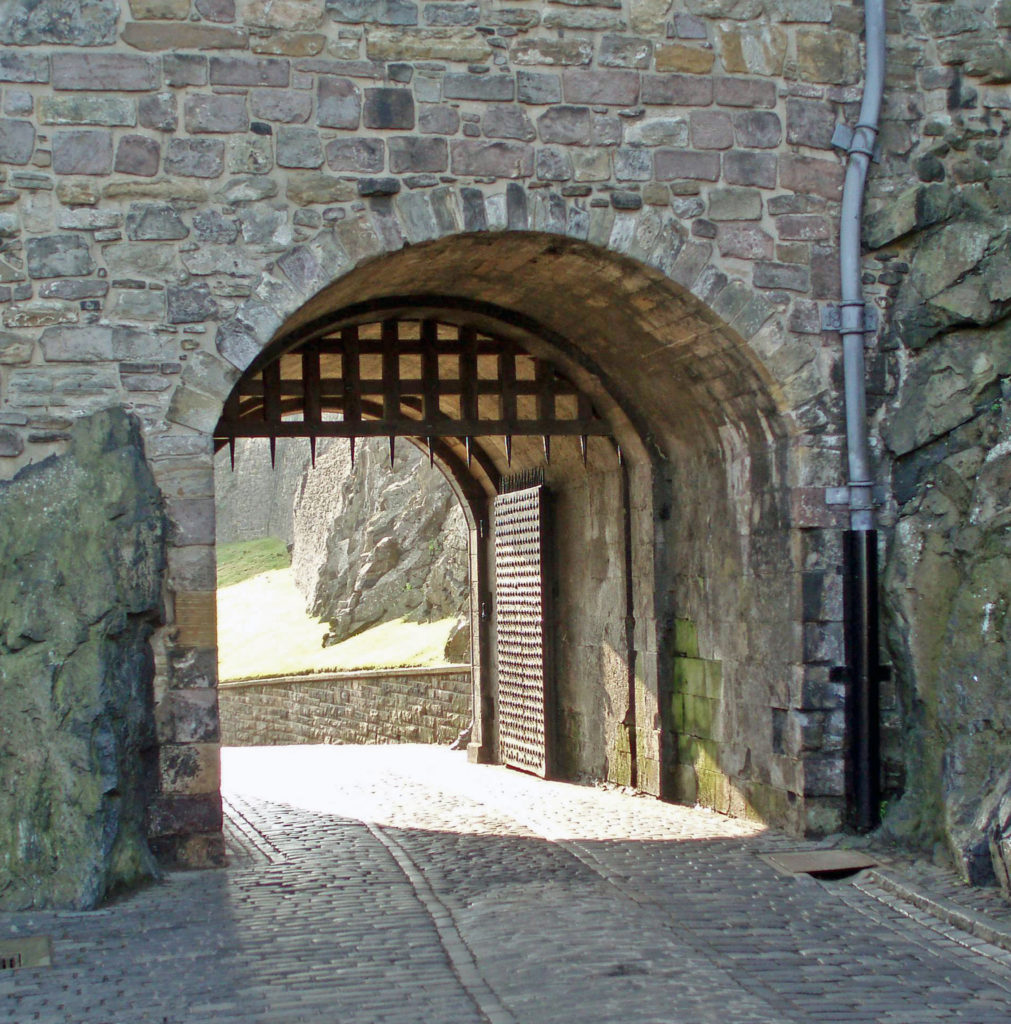
The Royal Mile
The Royal Mile begins at Edinburgh Castle and runs downhill to the Palace of Holyroodhouse. I was surprised by how much there was to see and do in that mile long stretch. We spent most of two full days exploring it.
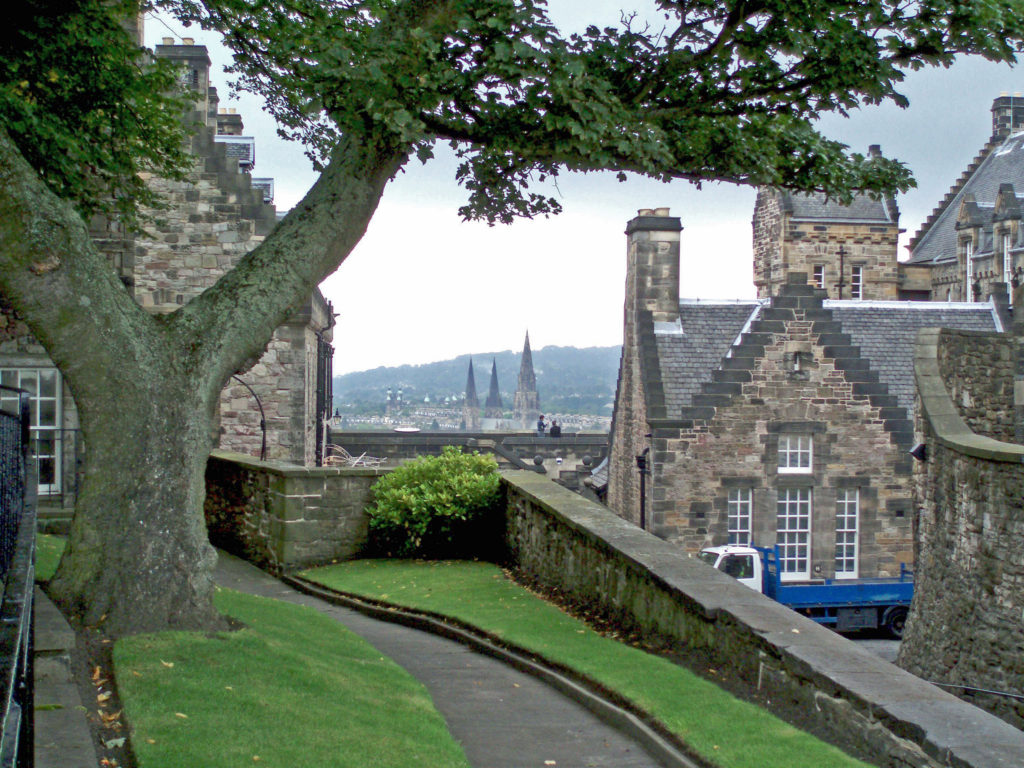
Just below the Castle, the Overlook Tower and the Camera Obscura are worth a visit. The camera obscura casts a fascinating real-time revolving image of the surrounding area onto a circular table. Nearby is the Scotch Whisky Heritage Center where you can learn about the making of Scotch Whisky and sample a variety of different whiskies.
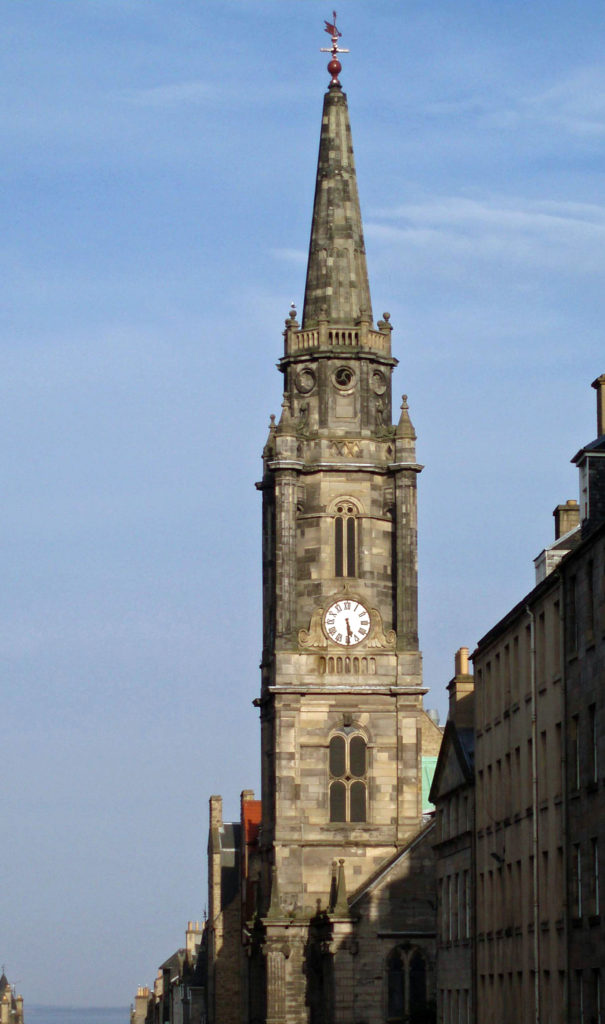 Although we didn’t go inside, St. Giles Cathedral, also known as the High Kirk of Edinburgh, is a magnificent structure that predates most of the structures in Edinburgh Castle. The cathedral was built between the late 14th and early 16th centuries. Entrance to the cathedral is free, but a small donation is requested.
Although we didn’t go inside, St. Giles Cathedral, also known as the High Kirk of Edinburgh, is a magnificent structure that predates most of the structures in Edinburgh Castle. The cathedral was built between the late 14th and early 16th centuries. Entrance to the cathedral is free, but a small donation is requested.
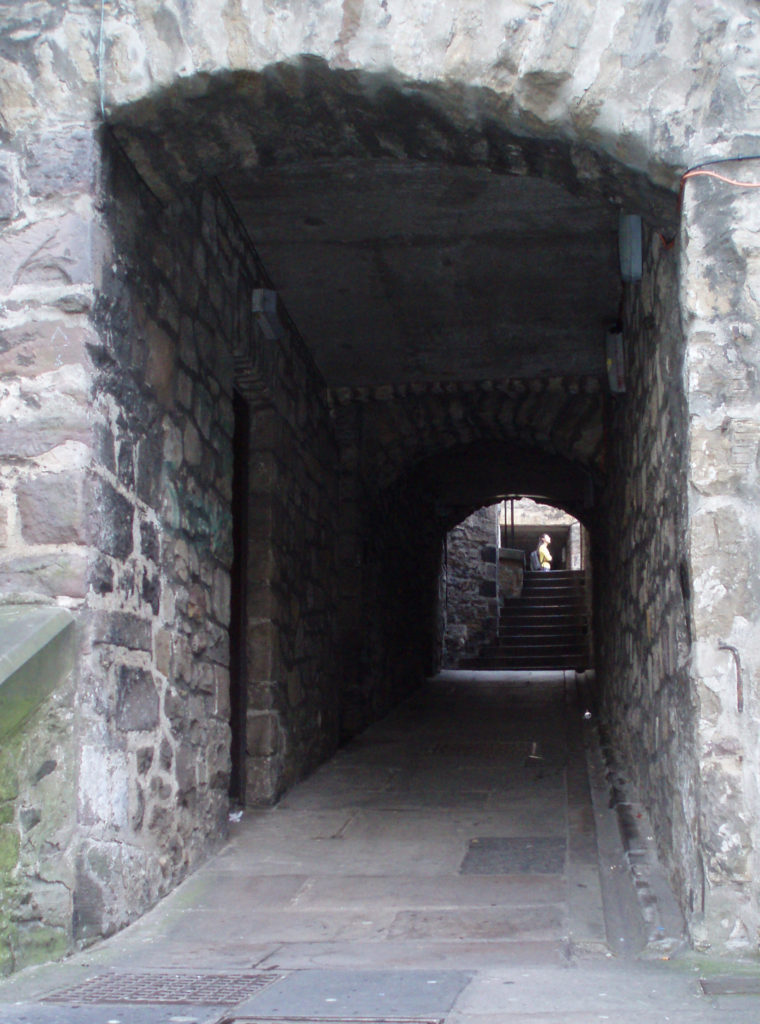 One of the attractions of the Royal Mile are the “closes,” underground passageways that were once narrow streets or walkways between houses. The upper floors of some the houses were demolished and the lower stories used as foundation for the Royal Exchange, built in the mid 18th century, leaving the closes below ground. Some of the closes remain as passages between the Royal Mile and the streets to the south, and organized tours of some of the more subterranean closes, such as the Real Mary King’s Close, are available.
One of the attractions of the Royal Mile are the “closes,” underground passageways that were once narrow streets or walkways between houses. The upper floors of some the houses were demolished and the lower stories used as foundation for the Royal Exchange, built in the mid 18th century, leaving the closes below ground. Some of the closes remain as passages between the Royal Mile and the streets to the south, and organized tours of some of the more subterranean closes, such as the Real Mary King’s Close, are available.
 Other attractions of the Royal Mile include the John Knox House, the Writers’ Museum, the Huntly House, and The People’s Story, a museum housed in the historic Canongate Tolbooth, built in 1591.
Other attractions of the Royal Mile include the John Knox House, the Writers’ Museum, the Huntly House, and The People’s Story, a museum housed in the historic Canongate Tolbooth, built in 1591.
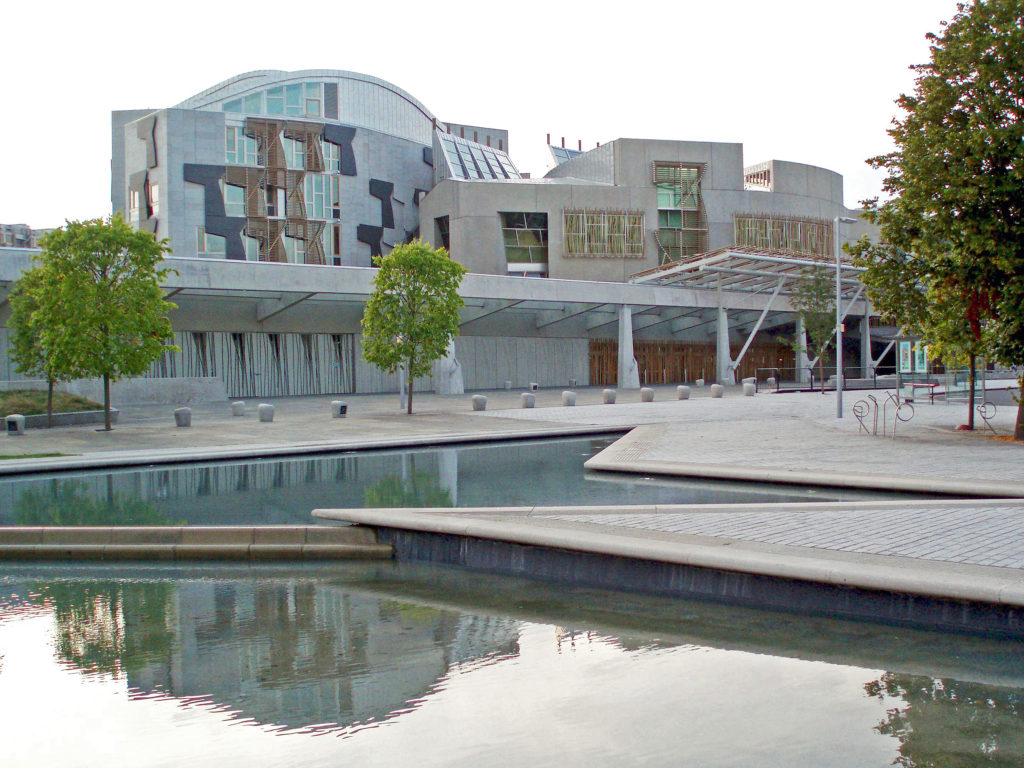 You will also find the Scottish Parliament buildings at the lower end of the Royal Mile near Holyroodhouse. Their contemporary, modernist design stands in stark contrast to the traditional and historical structures around them. And while I in fact like the design, to me they look out of place in their setting.
You will also find the Scottish Parliament buildings at the lower end of the Royal Mile near Holyroodhouse. Their contemporary, modernist design stands in stark contrast to the traditional and historical structures around them. And while I in fact like the design, to me they look out of place in their setting.
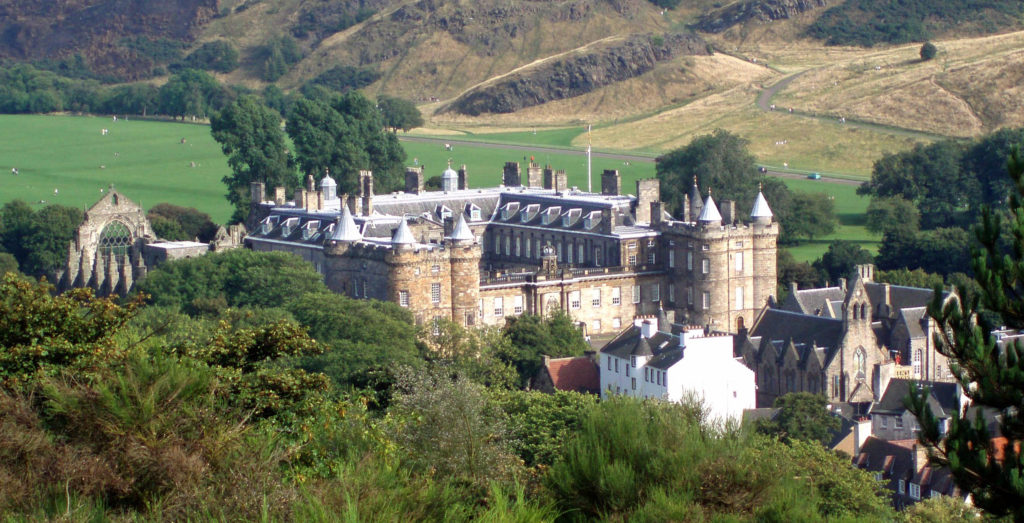
The Palace of Holyroodhouse
At the bottom of the Royal Mile lies the Palace of Holyroodhouse. All that remains of the original palace, built by James IV in the 16th century, is the North Tower. Most of the existing structure was built by Charles II about a century later. Adjacent to the palace are the ruins of the nave of an Augustinian abbey built in the 12th century.
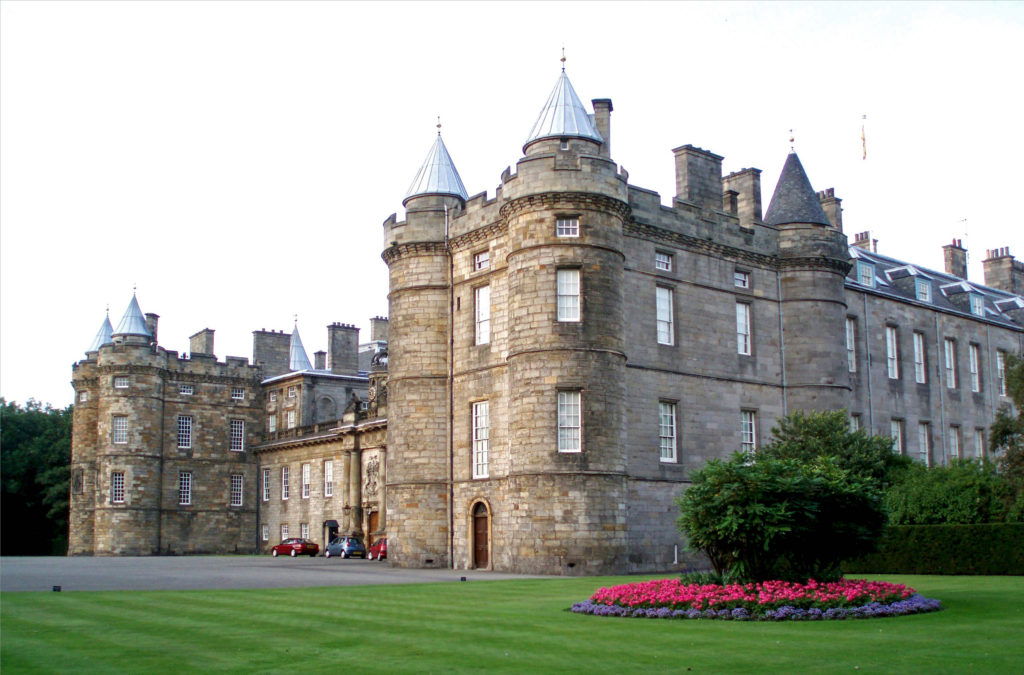 The Palace of Holyroodhouse is the official residence of the Monarchy in Scotland, but the palace is open to the public when King Charles III is not in residence. We did not tour the interior, but it comes highly rated. You can visit the Throne Room, the Picture Gallery, and the King’s Bedchamber, and Tour the King James Tower, where Mary Queen of Scots lived. For more information, check the Royal Collection Trust website.
The Palace of Holyroodhouse is the official residence of the Monarchy in Scotland, but the palace is open to the public when King Charles III is not in residence. We did not tour the interior, but it comes highly rated. You can visit the Throne Room, the Picture Gallery, and the King’s Bedchamber, and Tour the King James Tower, where Mary Queen of Scots lived. For more information, check the Royal Collection Trust website.
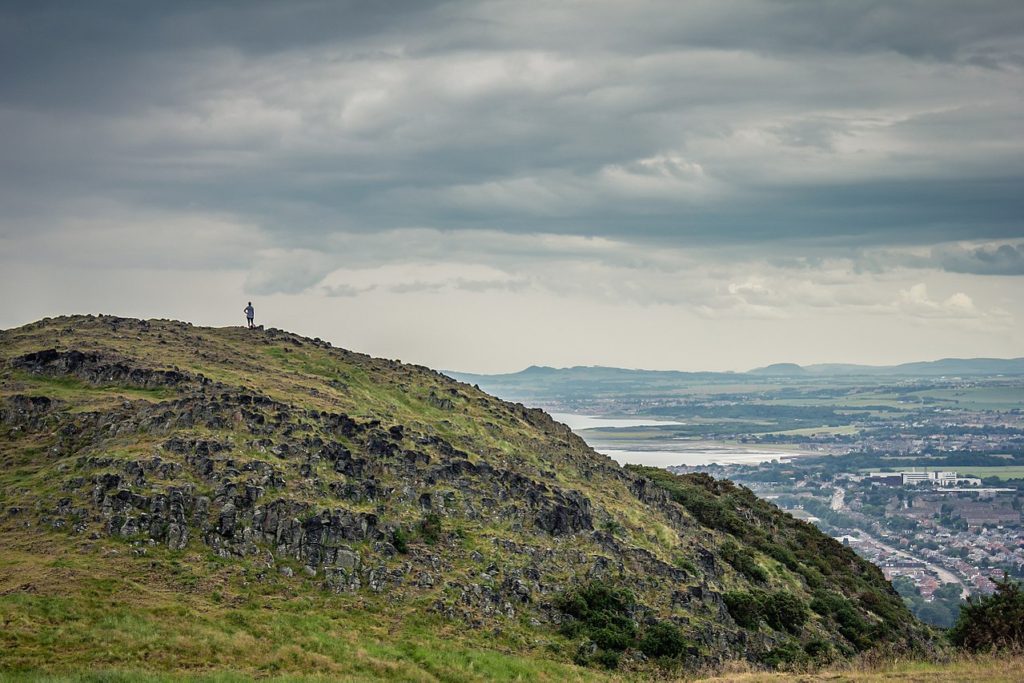
Adjacent to the palace is Holyrood Park. Here you can climb to the top of the 823-foot-high Arthur’s Seat where you can get a panoramic view of Edinburgh Castle and the city beyond.
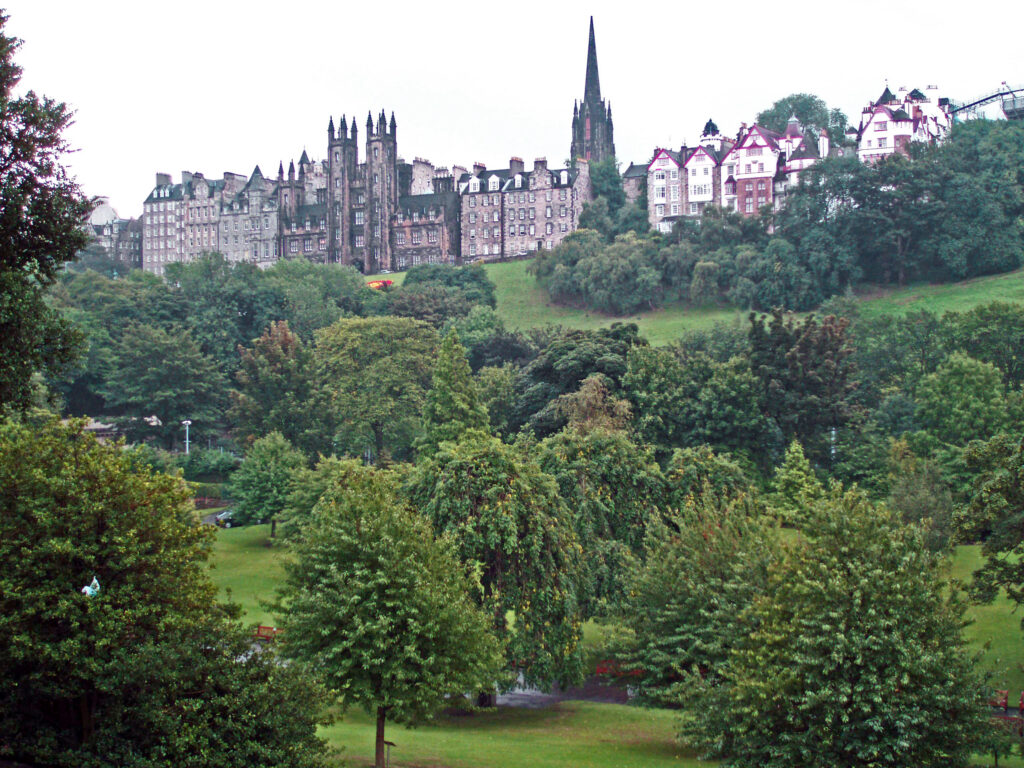
Beyond the Old Town
The most striking features of the New Town are the Princes Street Gardens, pictured above, and the Scott Memorial, pictured below.
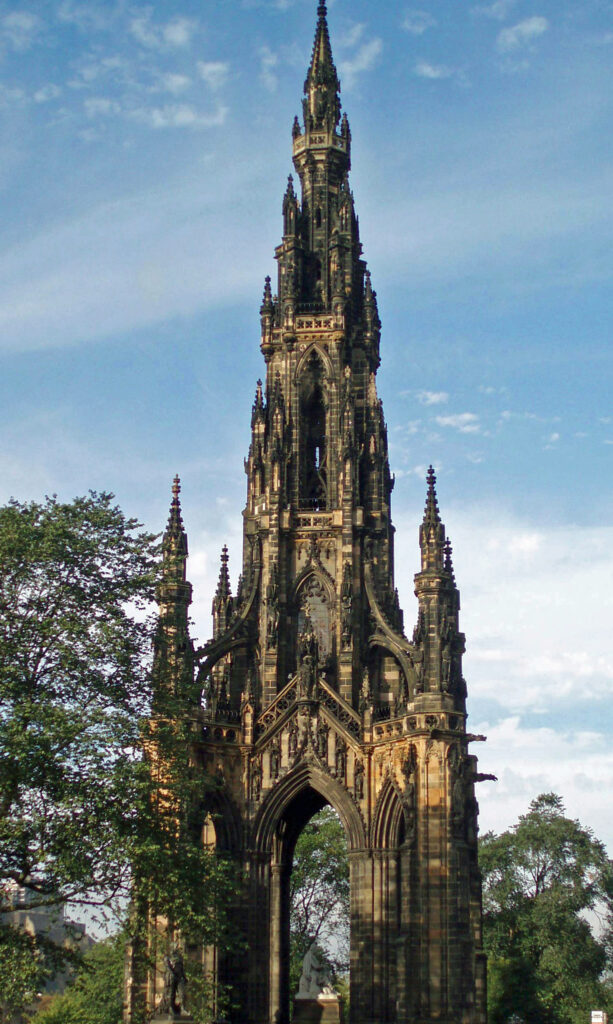 We didn’t make it to Queen Street and Queen Street Gardens, but the photos I’ve seen and the guidebook descriptions make me think we missed something there.
We didn’t make it to Queen Street and Queen Street Gardens, but the photos I’ve seen and the guidebook descriptions make me think we missed something there.
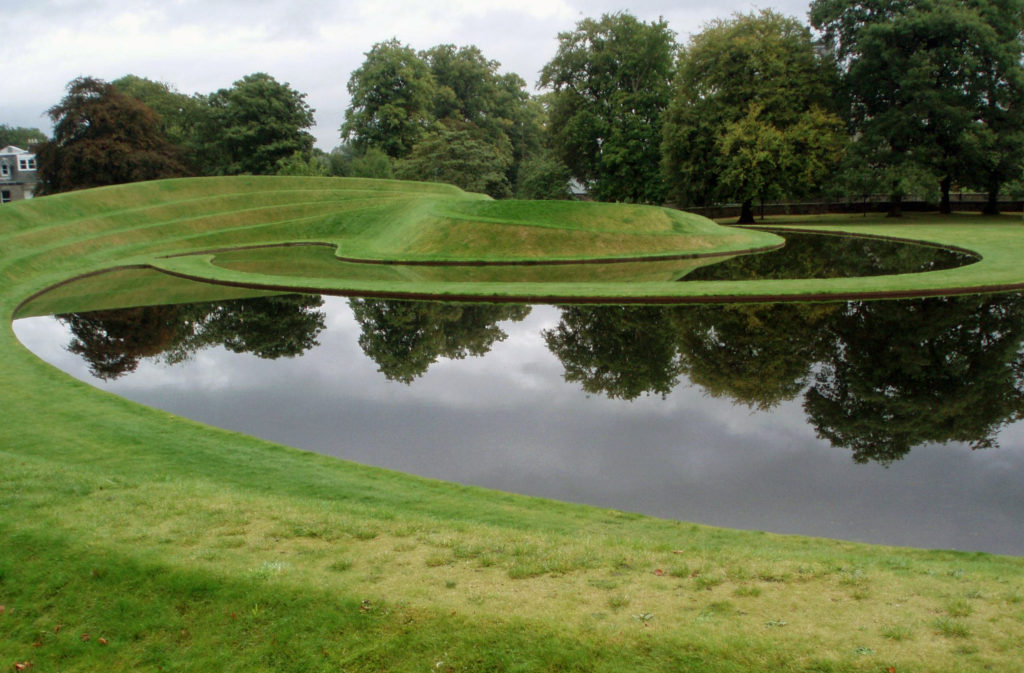 A little farther afield in the West End, though within easy walking distance of the New Town, is the Scottish Gallery of Modern Art, one of Edinburgh’s many museums. After days of being immersed in ancient history and medieval art, it was nice to see something more contemporary.
A little farther afield in the West End, though within easy walking distance of the New Town, is the Scottish Gallery of Modern Art, one of Edinburgh’s many museums. After days of being immersed in ancient history and medieval art, it was nice to see something more contemporary.
 On the walk back we discovered a path along the Water of Leith that took us to Dean Village, a charming little community that dates to the 12th century. (The Bald Hiker website just published a post on the Water of Leith walk – all 13 miles of it. Click here to view the post).
On the walk back we discovered a path along the Water of Leith that took us to Dean Village, a charming little community that dates to the 12th century. (The Bald Hiker website just published a post on the Water of Leith walk – all 13 miles of it. Click here to view the post).
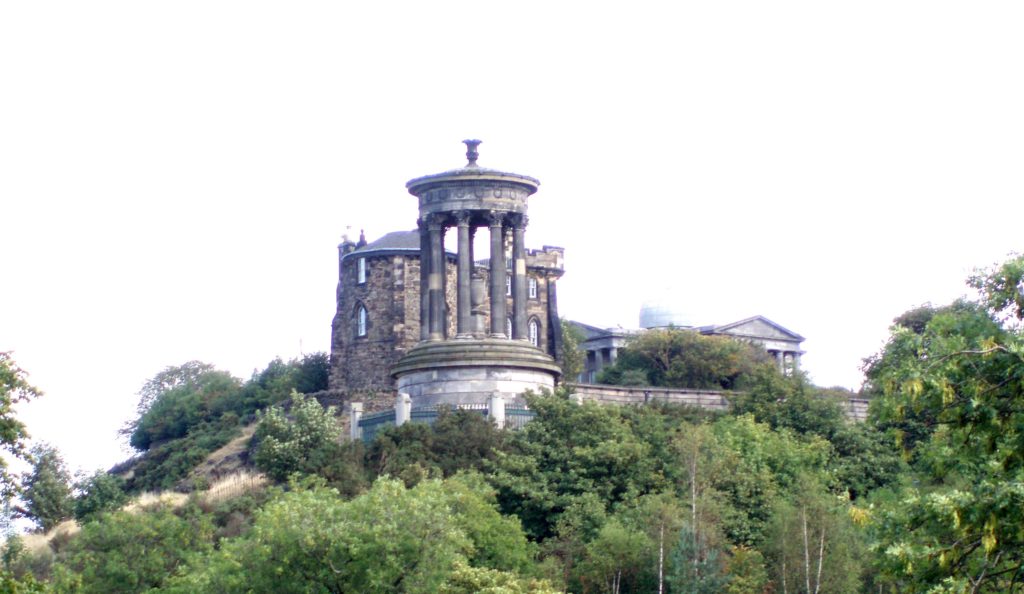 On our visit we stayed at an old hotel just east of Calton Hill. With its many monuments, including the Nelson Monument and the Lincoln Monument (which is in fact dedicated to Abraham Lincoln), Calton Hill is one of the more scenic and picturesque locations in Edinburgh. From the top of the hill you have a panoramic view over the city and to the Firth of Forth and the Port of Leith, where the Royal Yacht Britannia, once Queen Elizabeth II’s private yacht, is berthed. Since its decommissioning in 1997, the yacht has been open to the public.
On our visit we stayed at an old hotel just east of Calton Hill. With its many monuments, including the Nelson Monument and the Lincoln Monument (which is in fact dedicated to Abraham Lincoln), Calton Hill is one of the more scenic and picturesque locations in Edinburgh. From the top of the hill you have a panoramic view over the city and to the Firth of Forth and the Port of Leith, where the Royal Yacht Britannia, once Queen Elizabeth II’s private yacht, is berthed. Since its decommissioning in 1997, the yacht has been open to the public. 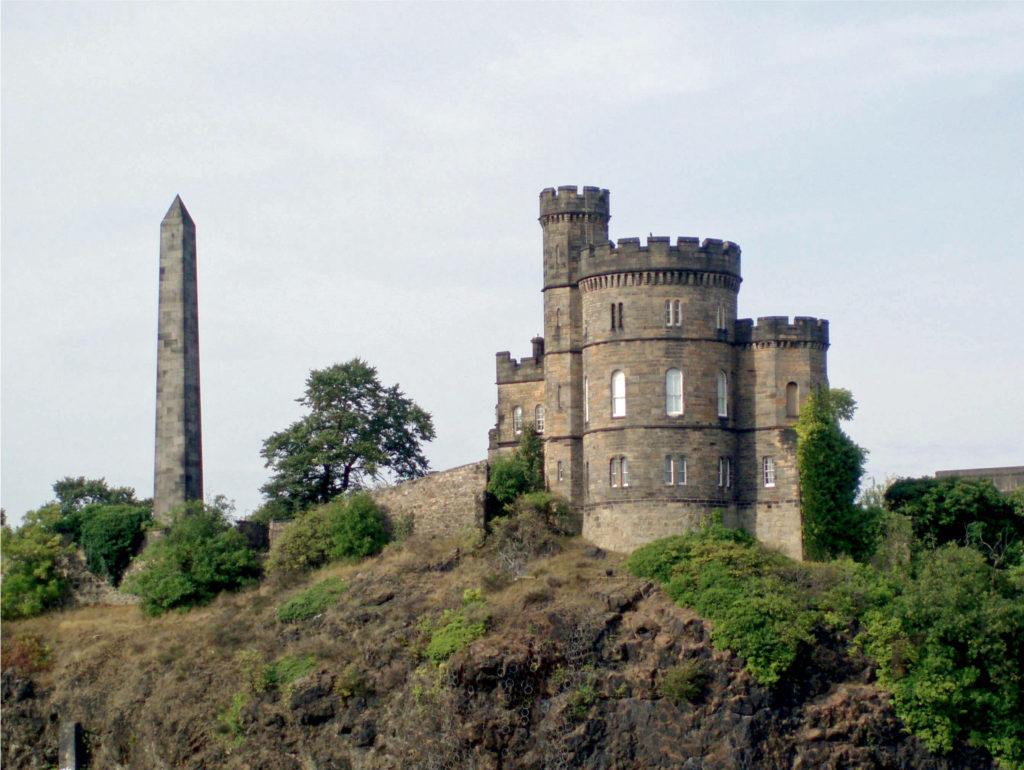
Festivals
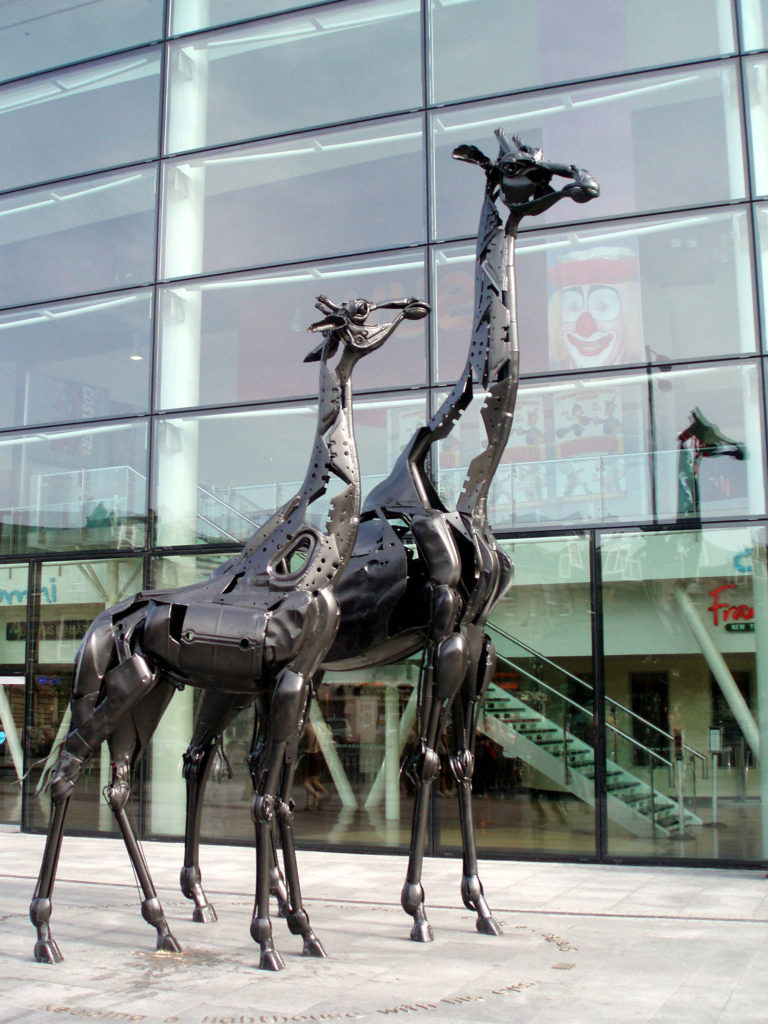
Edinburgh is not completely lost in its history. It has a modern, contemporary side as well, and it is a city of festivals. The biggest and most famous is the Edinburgh International Festival, held every August. Running simultaneously with it is the Edinburgh Festival Fringe in which anyone and everyone is given free rein to put on whatever kind of performance they choose, wherever they can find a place to perform it. The Fringe bills itself as the largest artistic festival in the world. And if that were not enough, there is a film festival, a jazz festival, a television festival, and (some years) a book festival that also run simultaneously with the International Festival.
Conclusion

I don’t know if we’ll ever return to Edinburgh. I would love to, but traveling to Europe is not something we can do every year, and there are probably too many places that we have not yet visited for us to be retracing past steps. If you have not been to Edinburgh, though, I highly recommend that you visit at some point, if possible. It’s a wonderful place and visiting is a much richer experience than I can convey in words and images. And Edinburgh was just the beginning of our travels in Scotland. Look for an updated post on the Isle of Skye, and perhaps one or two others down the road.
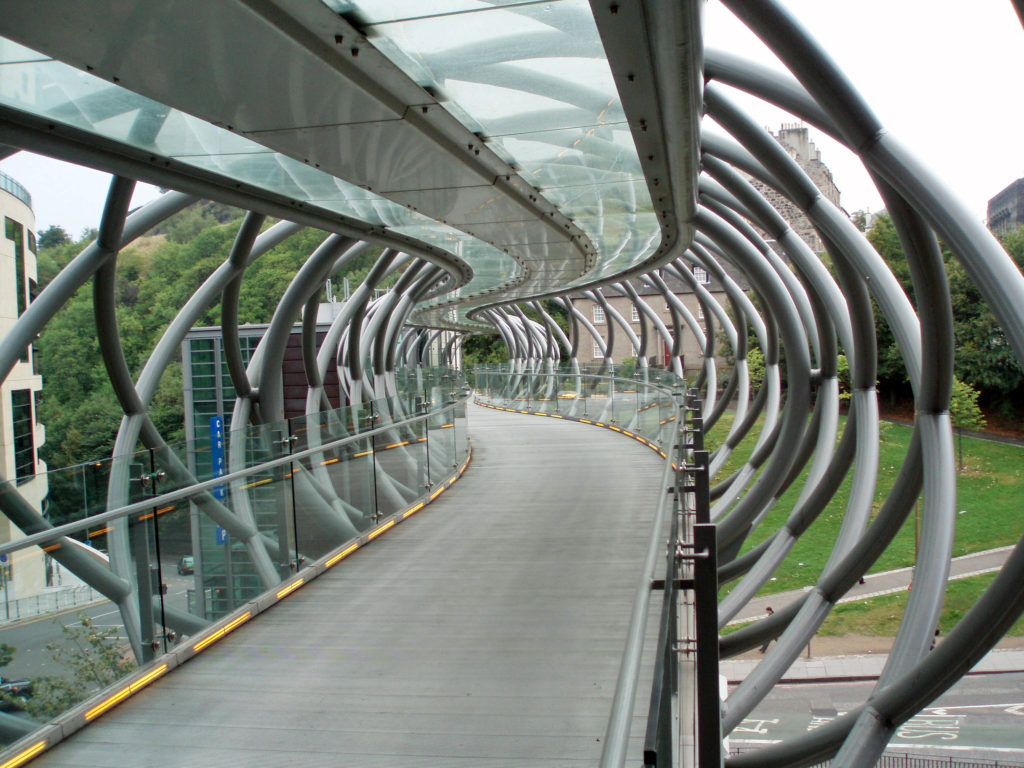
Originally posted by Alan K. Lee, September 16, 2020. Updated and re-posted July 10, 2023.
All photos © Alan K. Lee, except as noted

